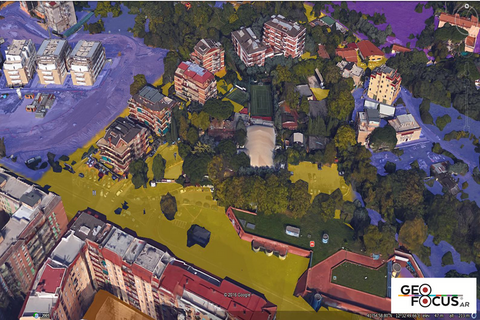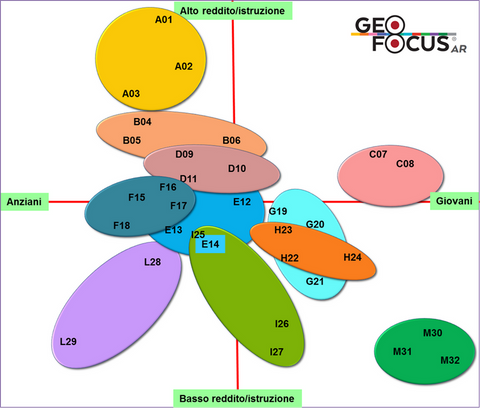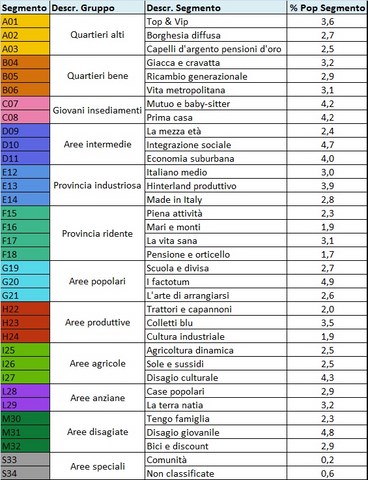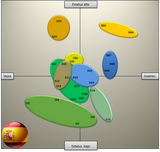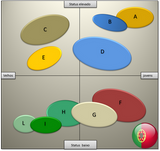Methodologies
Microterritoriali classifications
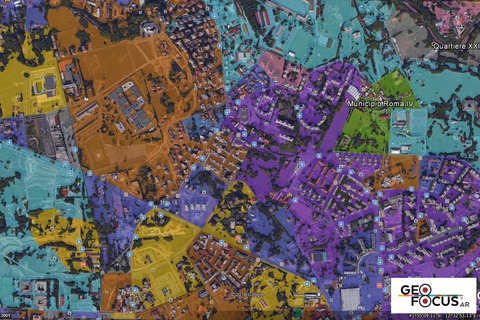
CommonGrounds has developed a proprietary methodology multi-countries to implement relationship Marketing strategies. Geodemographic classifications, allow understanding and reading of investments in communication.
- Since their appearance in Italy in 1985, microterritoriali classifications have always been a reference grid for business intelligence and geo-marketing.
- The choice of public sources, the selection of the "ingredients" favoured the full respect of privacy with the view to build a neutral system capable of enhancing customers ' proprietary information.
Microterritorio-relationship marketing
CommonGrounds bases its marketing Database Intelligence report on methods and tools, Geo-marketing, socio demographic analysis and classification of clients.
- With the goal of making every measurable marketing campaign and, most importantly, profitable, CommonGrounds has developed its own system of micro-marketing B2C, classification of Italian consumers, called Geofocus ©.
- The classification model GeoFocus © is designed in Italy, Brazil, France, Portugal and Spain. It is expected the development GeoFocus © for other European countries.
Geofocus-Italy
Augmented reality for marketers:
- Is the classification that covers about 400,000 sections has been divided the country during the Census ISTAT.
- On the basis of socio-economic data collected, the sections were classified, with statistical procedures, in 35 Cluster.
- Each section, containing on average about 67 families belong to only one cluster (segment).
- The 35 segments were then grouped into 11 groups on the basis of their main characteristics.
Geofocus Groups-Italy
- GROUP A – Uptown 8.8% of the population
- Group B – good neighborhoods 9.2% of the population
- Group C – young settlements 8.4% of the population
- Group D – intermediate areas 11.1% of the population
- 9.7% of the population and industrious GROUP – province
- Group F – Laughing Province 9% of the population
- Group G – Popular 10.2% of the population Areas
- Group H – production areas 7.4% of the population
- Group I – 9.3% of the population of farmland
- Group L-6.1% of the population of older Areas
- GROUP M – 10% of the population disadvantaged Areas
- GROUP S – special areas 0.8% of the population
Geofocus - Brasil
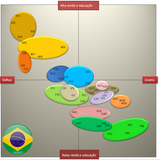
- THE TERRITORIAL SEGMENTATION GEOfocus Brasil
The segmentation concerned the approximately 310,000 sections in which the Brazilian territory was divided during the 2010 Census.
On the basis of the socio-economic data collected, the sections were classified, with statistical procedures, in 52 clusters.
Each section, containing on average about 610 people, therefore belongs to a single cluster (segment).
The 52 segments were then grouped into 20 groups based on their main characteristics.
Geofocus - France
TERRITORIAL SEGMENTATION GEOfocus France
The segmentation covered approximately 51,000 IRIS [1] where it was broken up in France during the 2007 Census. On the basis of socio-economic data collected, the IRIS have been classified, with statistical procedures, in 38 cluster. Each IRIS, containing on average about 530 families, belong to only one cluster (segment).
The 37 segments were then grouped into 12 groups based on their main characteristics.
The segmentation covered approximately 51,000 IRIS [1] where it was broken up in France during the 2007 Census. On the basis of socio-economic data collected, the IRIS have been classified, with statistical procedures, in 38 cluster. Each IRIS, containing on average about 530 families, belong to only one cluster (segment).
The 37 segments were then grouped into 12 groups based on their main characteristics.
[1] The IRIS (Ilots Regroupés pour des Indicateurs Statistiques) are standard subdivisions of the French territory .
Geofocus - Spain
- TERRITORIAL SEGMENTATION GEOfocus Spain
The segmentation covered approximately 34,000 sections has been split over Spain during the 2001 Census. On the basis of socio-economic data collected sections were classified, with statistical procedures, in 29 cluster. Each section, containing on average about 400 families belong to only one cluster (segment).
The 29 segments were then grouped into 10 groups based on their main characteristics.
Geofocus-Portugal
- TERRITORIAL SEGMENTATION GEOfocus Portugal
The segmentation covered about 177,893 sections has been broken on Portuguese territory during the 2001 Census. On the basis of socio-economic data collected sections were classified, with statistical procedures, into 11 groups. Each section, containing on average about 21 families, belong to only one group identified on the basis of its main characteristics.



